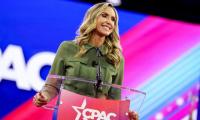On a humid morning in Lucknow, hundreds of young men and women nervously shuffle their application papers as they stand in queues at a job fair. Some graduated recently, others years ago. Their goal: A one-year contract job paying about 15,000 rupees ($178) a month, reports Bloomberg.
“I am ashamed to be here,” says law graduate Pankaj Verma. “I’m starting to feel I should have studied something else instead of spending so much money to study law. I could have invested the money elsewhere or built a business.”
Job fairs overcrowded with disillusioned graduates such as this one in the capital of Uttar Pradesh are a stark reality check for bullish investors betting on India as the next big global growth engine. For all the optimism that’s luring investment from the likes of Apple Inc, the reality across most cities and villages is that the ‘boom’ just isn’t creating enough quality jobs for the millions of people entering the workforce each year.
At this year’s national elections, failure to deliver on past job creation promises hurt Prime Minister Narendra Modi’s Bharatiya Janata Party, which lost its parliamentary majority for the first time in a decade. Having scraped back into government with the help of coalition allies, Modi’s July budget promised 2 trillion rupees over five years to boost manufacturing jobs and train 2 million people.
The challenge is enormous -- and pressing. By 2030, one out of every five working-age people on Earth will be Indian, meaning the country needs to create at least 115 million new jobs by the end of the decade, according to a report by investment bank Natixis SA, a task it describes as “herculean.” There’s a 15-year window where the labor force expands, steadies and then begins to age, putting a clock on India’s chance to cash in on its demographic dividend.
“After 2040, working-age people will be outnumbered by non-working age people,” said Amit Basole, head of the Centre for Sustainable Employment at the Azim Premji University. “If by then we aren’t middle income, it’s a serious issue that we are looking at because we don’t know how to take care of so many dependents.”
India’s per capita GDP is a little over $2,700 and even that figure is skewed by having some of the world’s worst income inequality. So desperate are Indians for work that millions toil in the Middle East and Gulf economies, often in dangerous conditions, as the government inks mobility agreements with everyone from Israel to Taiwan to find employment for low-skilled workers.
Modi has pledged to make India a developed country by the centenary of its independence in 2047 and adopted the phrase ‘Viksit Bharat’, or developed India, throughout the election campaign. He’s spending billions on infrastructure and pushing an ambitious ‘Make in India’ campaign to lure investment and create jobs in the manufacturing sector.
But he’s struggled to deliver on past jobs promises and the employment picture shows no signs of improving. The overall jobless rate averaged 8.05 per cent in the year through March, up from 7.56 per cent in the prior 12 months, according to the Centre for Monitoring Indian Economy, which produces the country’s most-cited unemployment figures. For those aged 20 to 24, it was 42.8 per cent.
These figures are starkly different from the official numbers, which most economists say aren’t accurate as they are infrequent and include unpaid labour. The government publishes a country-wide unemployment rate only on an annual basis, and a rate for urban areas every quarter. The most recent official report puts the unemployment rate for the country at 3.2 per cent for 2022-2023 -- a figure that would be the envy of governments around the world.
Devashish Mitra, an economics professor at Syracuse University in New York who has consulted with multilateral agencies like the World Bank and Asian Development Bank and written research papers on labour markets, says Modi hasn’t been able to live up to his jobs promises due to stagnating exports, the slow implementation of labour reforms and insufficient education and training for new workers.
The greater the delay in job creation today, the more employment needs to be created in the future, compounding the challenge.
“This demographic dividend could easily become a demographic curse if the labour market gap is not handled well,” Mitra warns.
Bloomberg Economics’s Abhishek Gupta says India needs to prioritize labour-intensive sectors such as tourism and healthcare and expand the scope of its production-linked incentive schemes to boost jobs. On top of such supply-side reforms, the government needs to do more to boost demand by rationalizing taxes for the growing middle-income class, Gupta said.
There have been advances, helping propel growth to around 7.0 per cent and making India the world’s fastest-growing major economy. Data last week showed a 6.7 per cent expansion in the three months to June from a year earlier, led by consumption and investment, though risks to the outlook are mounting with economists downgrading their full-year projections.
Modi has been trying to sell India’s growth story and lure global firms with incentives such as tax cuts, rebates and capital support. That has helped create jobs in sectors such as mobile phone manufacturing and electronics and encouraged a robust start-up sector. But, the main generators of employment - small and medium industries - have continued to struggle due to red tape, lack of capital and a skills mismatch.
“Big corporate India, in terms of jobs doesn’t account for many and is far more capital intensive,” said Basole. And it takes the spotlight away from the industries which are more labour intensive but operating in a difficult environment.
As a result, people like Chandan Kumar are being left behind. The Arts graduate has been trying in vain to clinch a secure job with benefits in New Delhi, the nation’s capital, for about a decade now.
“There are too many hurdles for an ordinary Indian,” says Kumar, 29, who delivers food at nights to provide for his parents, siblings, wife and 18-month-old daughter. “On my salary, I can’t make ends meet.”
That puts Kumar in what’s called the ‘black economy’ -- the vast informal sector that employs almost 90 per cent of India’s workforce on farms, construction sites and in unskilled roles across the countryside, towns and cities. There’s little-to-no job security or benefits and no income taxes, depriving the government of revenue that could be spent building infrastructure and creating better employment opportunities.
The jobs picture is even more bleak for women, who remain held back by societal views of them as care-givers first and foremost. The female labour force participation of just 33 per cent is one of the world’s lowest levels.
“Jobs are not being created in a way that women can actually combine productive labour with social reproduction, with the needs of the care economy,” said Ravi S Srivastava, director at the Centre for Employment Studies. Meantime, “educated youth are getting stuck at the lower end of the job market.”
In the face of protests over the lack of jobs, such as those two years ago where angry youth facing bleak employment prospects blocked highways and set trains on fire after a military recruitment program was shortened, Modi has doubled down on social welfare programs which provide free food instead of subsidized grains and in some states doles out cash handouts to women to compensate for the lack of jobs.
At jobs fairs in Lucknow and in New Delhi, Bloomberg News reporters spoke with dozens of young men and women seeking employment or preparing for tests for government positions. Most complained that only low-paying contractual work is available.
Sandeep Prajapati, 31, said he’s been to at least eight job fairs, but hasn’t been able to get anything more than a 6-month contract job. Sohail Khan, 23, did land a warehouse position, only to find he was forced to work eight hours without a break to eat lunch. He quit after less than three months. Sachin Chaudhary, 24, says the only option in the current market is to take any available job and make the best of it.
Data on public service jobs illustrate the challenge. Since the start of Modi’s term to the end of March 2022, some 220 million people applied for federal jobs; just 722,000 were recruited, government data shows. In 2022, Modi unveiled another plan to hire a million people to fill vacancies in various federal departments.
Nissan Motor CEO Makoto Uchida and Honda Motor CEO Toshihiro Mibe attend press conference in Tokyo. —...
Samiullah Siddiqui, Chairman PAIB committee and council member ICAP addressing the event. —...
The representational image shows a person holding gold necklaces. — AFP/FileKARACHI: Gold prices rose by Rs2,100 per...
US President-elect Donald Trump speaks to attendees during a campaign rally at the Mosack Group warehouse in Mint...
A representational image of a tax files. — Pixabay/FileLAHORE: The notion that Pakistan’s corporate sector is...
President of the Karachi Chamber of Commerce & Industry Muhammad Jawed Bilwani can be seeen in this photo released on...







